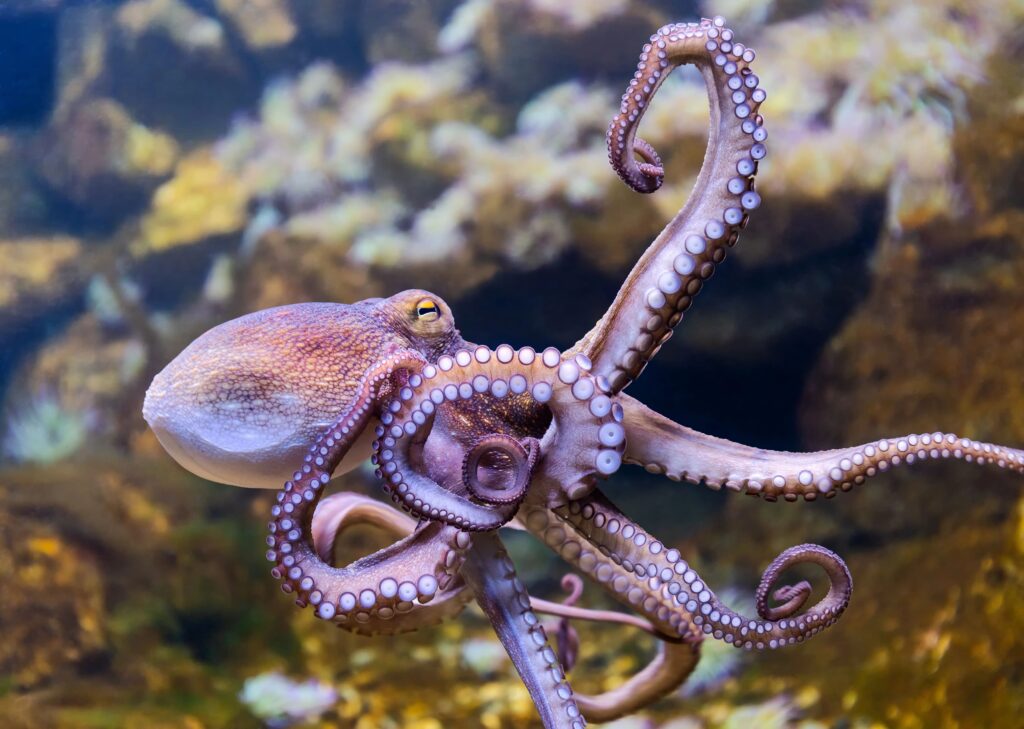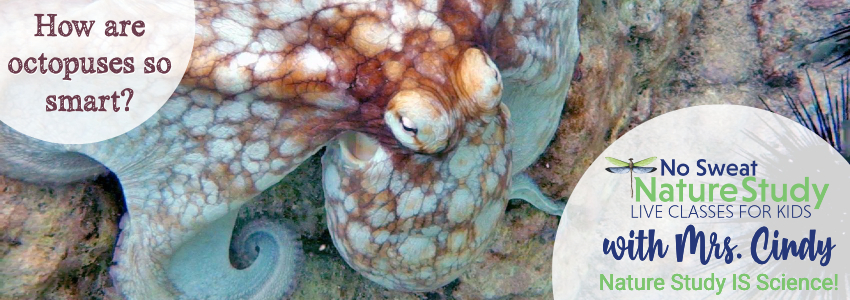Why Do Octopuses Have Blue Blood? Nature Study
Get ready for a wild underwater adventure with this octopus nature study! In this episode of the No Sweat Nature Study Podcast, kids will learn why octopuses have blue blood, how their bodies collect oxygen, and what makes them so perfectly suited for life in the ocean. From hemocyanin to camouflage, this short science lesson will spark curiosity and build a strong foundation in marine biology.
Whether your children already love marine animals or are just beginning to explore the wonders of the ocean, they’ll be amazed by what they learn about octopuses. With fascinating facts, big science words, and fun discussion questions, this episode makes a perfect addition to any homeschool or classroom unit on sea life.
Octopuses Nature Study
Use these questions to chat with your children after listening to the podcast. They’re a great way to check comprehension, spark thoughtful conversations, and review some of the big science concepts from the episode.
- Why is human blood red? (Because it contains hemoglobin, which has iron that turns red when it mixes with oxygen)
- What is the name of the special molecule in octopus blood? (Hemocyanin)
- What element does hemocyanin contain instead of iron? (Copper)
- What color does hemocyanin turn when it mixes with oxygen? (Blue)
- Why is blue blood helpful for octopuses? (It helps them survive in cold, low-oxygen ocean water)
- Where does an octopus take in oxygen-rich water? (Through its mantle cavity)
- How does oxygen get into an octopus’s blood? (Water passes over gills that collect oxygen and send it into the blood)
- If you had more than one heart like an octopus, what would you do with all that extra energy? (Open-ended conversation starter)

Octopuses Nature Study Video Class
In the upcoming No Sweat Nature Study video class about octopuses, students will investigate the unique features of this fascinating marine animal. They’ll learn about octopus body parts and their functions, discover how camouflage helps them hide from predators, and explore how they use their arms and suckers in ingenious ways to interact with their environment.
During the class, kids will create a vibrant underwater nature journal page featuring a camouflaged octopus blending into its surroundings. It’s the perfect blend of science and art that brings learning to life, helping children remember key facts through creativity and observation.

Book List of Favorite Nature Book Recommendations
The listeners of the No Sweat Nature Study Podcast have been sharing their fabulous reading suggestions! Click here to see all the recommendations in one place.
Would you like to record a voicemail to answer this season’s nature study question?
At the end of each No Sweat Nature Study Podcast episode, Mrs. Cindy includes messages from a few of her friends. You can record a message that she might use on an upcoming episode!
All children must have their parents’ permission before leaving a recording. Parents are welcome to record an answer, too!
Each season, there will be a different question to answer. You can see this season’s question below. Think about your answer first, and then follow these simple directions:
- Click the “Start recording” button.
- Tell me your first name. (If you want to tell your age and/or where you live, feel free to do that.)
- You will have 60 seconds to answer the question, but try to be concise.
- Press the play button to listen to your recording before sending it, to ensure it is recorded correctly. If not, record it again.
Please leave a rating or a review on your podcast app! It helps the podcast to show up for more people…which means more families can enjoy science through the wonderful lens of nature study! Thank you!

Mrs.Cindy we LOVE studying with you in the incredible subject of nature!
It’s soooooooooooooooooooo fun and exciting and you make it easy for all ages!
Please don’t stop teaching!
You just made my day! I LOVE teaching No Sweat Nature Study!